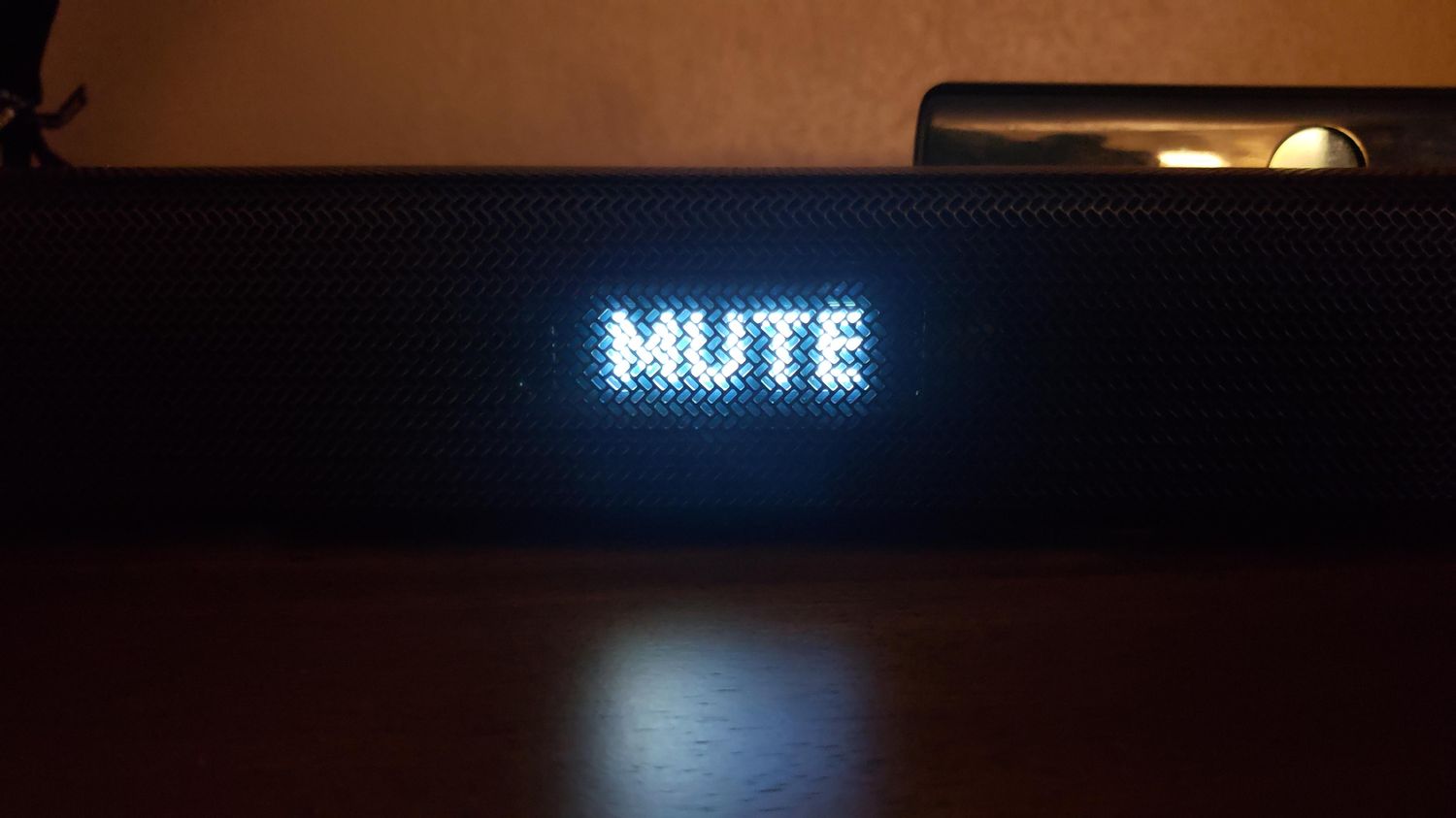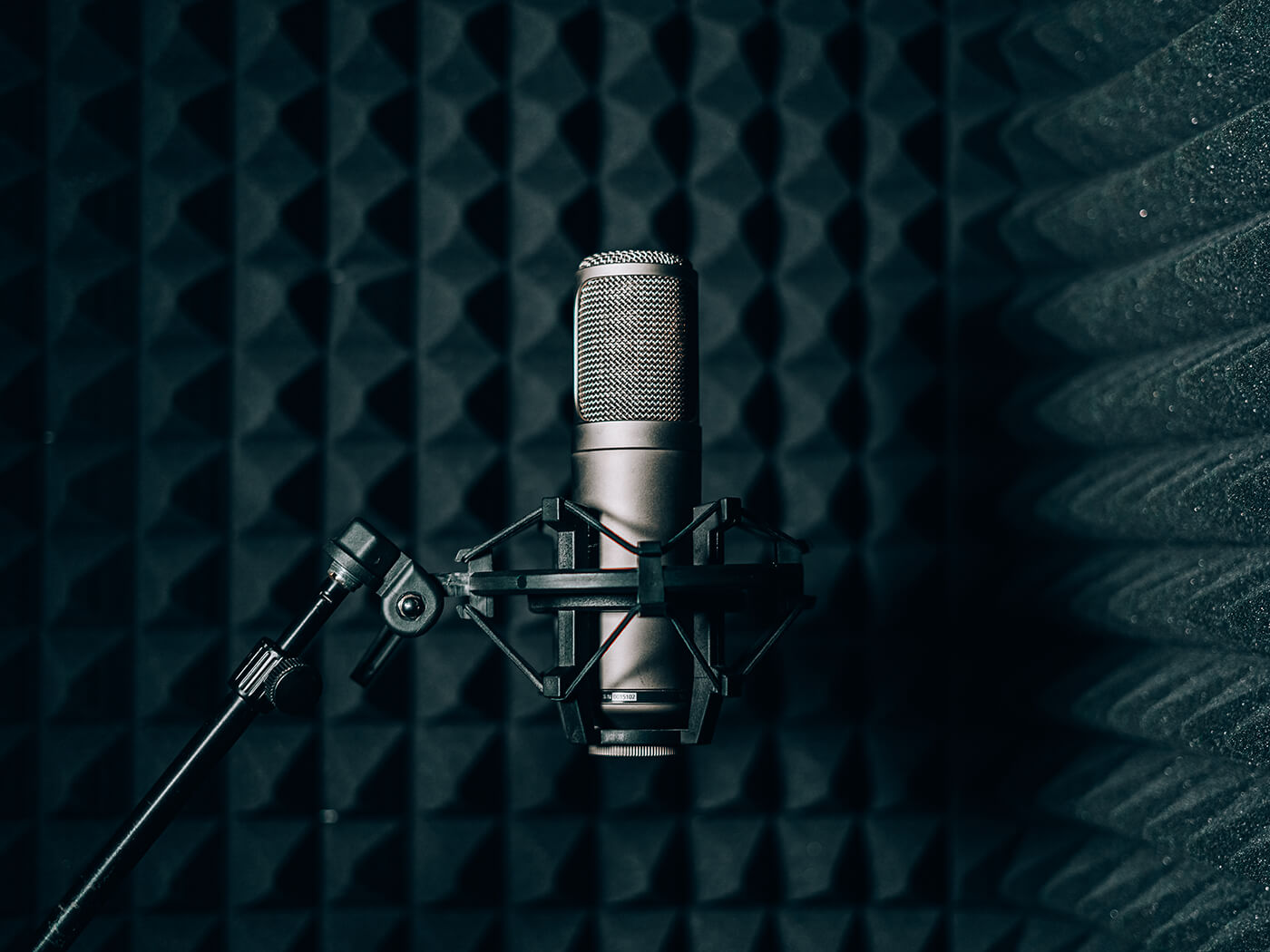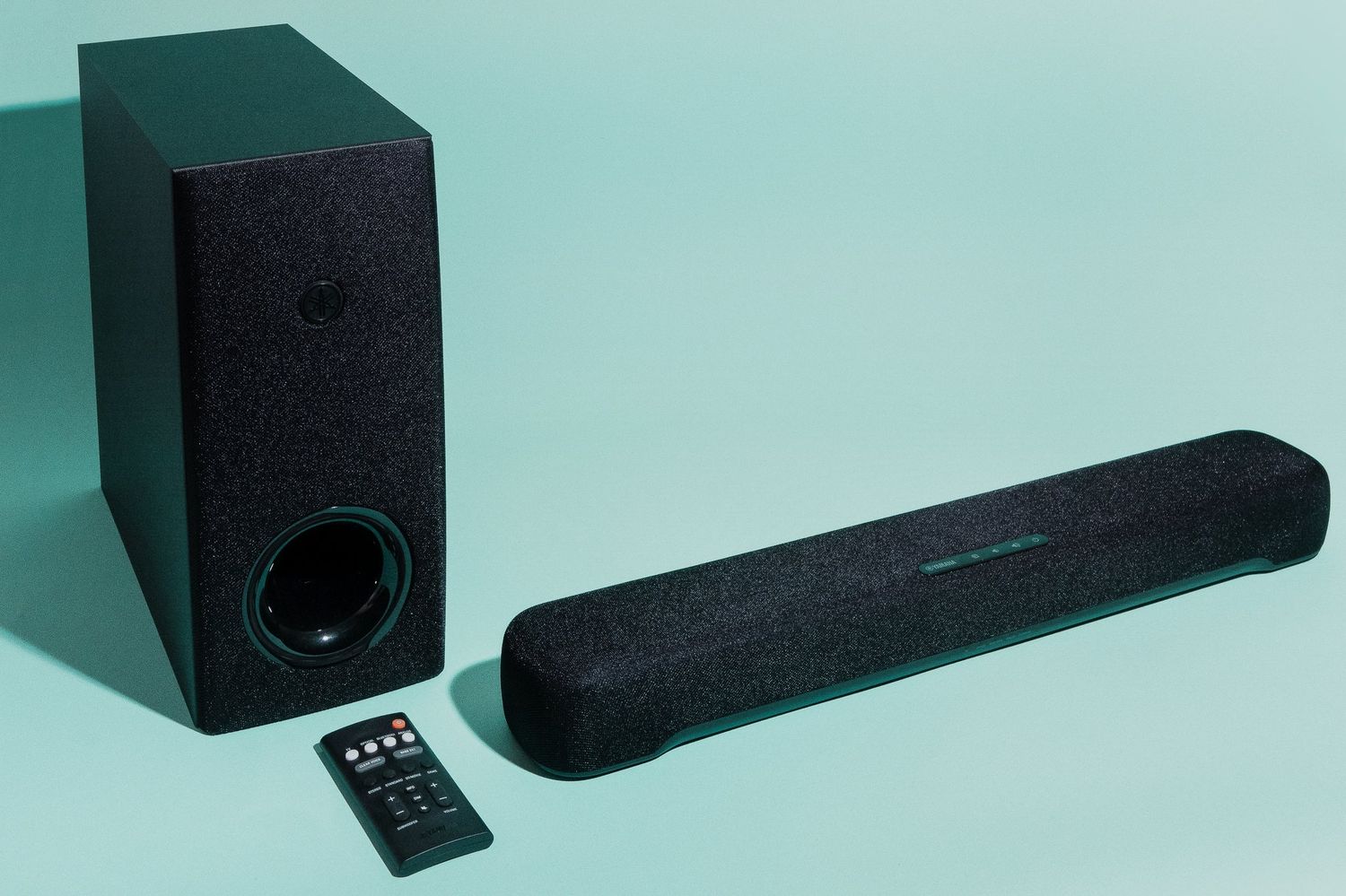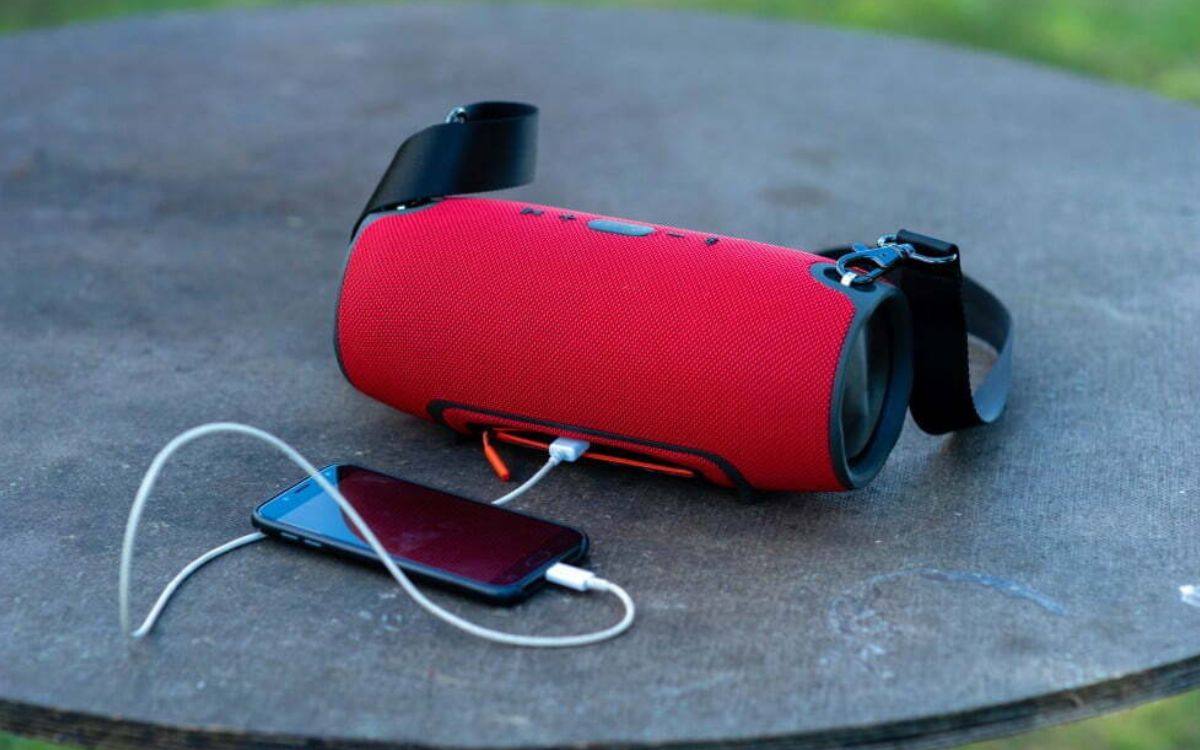Home>Production & Technology>Sound>Why Does My Voice Sound Different On Video


Sound
Why Does My Voice Sound Different On Video
Published: December 18, 2023
Discover why your voice may sound different on video and learn how sound is perceived and transmitted differently in this informative guide.
(Many of the links in this article redirect to a specific reviewed product. Your purchase of these products through affiliate links helps to generate commission for AudioLover.com, at no extra cost. Learn more)
Table of Contents
Introduction
Have you ever watched a video of yourself speaking and wondered, “Why does my voice sound different?” It’s a common experience that many people can relate to. The voice we hear in our heads when we speak is quite different from the voice others hear when they listen to us. This disparity between our perceived voice and its recorded version can be quite surprising and even unsettling. But fear not, there is a scientific explanation behind this phenomenon.
Our perception of our own voice is influenced by various factors, including the vibrations of our vocal cords and the way sound waves travel through our body. When we speak, the sound is transmitted through our bones and tissues, which adds resonance and depth to the sound we perceive. However, when we listen to a recording of our voice, we only hear the sound that is transmitted through the air, without the additional resonance from our body.
The difference in the way we perceive our voice can be attributed to the fact that we are hearing two different versions of it – the internal version and the external version. The internal version is what we hear when we speak, as the sound vibrations travel through the bones of our skull and reach our inner ear. This internal version is typically deeper and richer in tonality.
On the other hand, the external version of our voice is what others hear when they listen to us. This version lacks the additional resonance from our body, resulting in a higher and thinner sound. When we listen to a recording of our voice, we are hearing it from an external perspective, which can be quite different from how we perceive it internally.
This dissonance between our internal and external voice perception can be a bit disorienting at first, as we are not accustomed to hearing our voice from an outsider’s perspective. However, it’s important to note that the way we sound on video or in recordings is how others hear us. So, the voice we hear in our head may not fully represent how we sound to others.
Understanding why our voice sounds different on video can help us appreciate and accept our true voice. In the following sections, we will delve into the scientific and psychological aspects of voice perception and explore techniques to improve our voice perception on video.
Understanding the Perception of Our Own Voice
Our perception of our own voice is a fascinating subject that involves a combination of physiological and psychological factors. To fully grasp why our voice sounds different on video, it is essential to explore these aspects in detail.
Physiologically, the way we hear our own voice is influenced by the vibrations of our vocal cords and the way sound waves travel through our body. When we speak, the vocal cords vibrate, producing sound that travels through our throat, mouth, and nasal passages. This sound reaches our eardrums, where it is converted into nerve impulses that our brain interprets as sound. However, the sound vibrations don’t just travel through the air to reach our ears; they also travel through the bones and tissues of our body.
The additional resonance created by the vibrations traveling through our body gives our voice a richer and deeper quality when we hear it internally. It is this internal perception of our voice that we have become accustomed to, as it is how we have heard ourselves speaking throughout our lives. The richness and depth of our internal voice are accentuated by the added resonance from the bones and tissues.
When we listen to a recording of our voice or hear it played back on video, we are hearing it from an external perspective. This external version of our voice lacks the additional resonance from our body, resulting in a sound that may appear higher and thinner than we are accustomed to hearing internally.
Psychologically, there is also a cognitive component to how we perceive our own voice. We develop a self-perception of our voice based on previous experiences and feedback we have received. This self-perception can sometimes be distorted, as we may have a particular image of how we believe our voice to sound, which may not align with its actual recorded version.
Furthermore, our perception of our own voice can be influenced by self-consciousness and self-criticism. When we listen to a recording of ourselves, we may become overly focused on certain aspects of our voice that we feel are inadequate or unappealing. This hyper-awareness can skew our perception of our voice and lead to negative judgments about its quality.
Understanding the complex interplay between physiology and psychology when it comes to the perception of our own voice can help alleviate some of the confusion or disappointment we may feel when hearing our voice on video. It is important to remember that the externally perceived voice is how others hear us, and it may not necessarily align with our internal perception.
In the next sections, we will explore the scientific factors that contribute to why our voice sounds different on video and discuss techniques to improve our voice perception in recordings.
The Science behind Why Our Voices Sound Different
There is a scientific explanation for why our voices sound different when recorded or played back on video. It involves the physics of sound propagation and the way our ears perceive and interpret these sound waves.
When we speak, sound waves are generated by the vibrations of our vocal cords. These sound waves travel through the air and reach our ears. However, there is a difference between how our voice sounds when we hear it in person compared to when we hear a recording of it.
When we hear our voice directly, as in when we are speaking or listening to our own vocalizations, the sound not only travels through the air to reach our ears but also through our body. The sound waves are transmitted through the bones, tissues, and cavities of our head, which adds resonance and amplification to the sound, resulting in a deeper and fuller perception of our voice.
However, when we listen to a recording of our voice, we only hear the sound that is transmitted through the air. This means that the added resonance and amplification from our body are absent, resulting in a sound that may seem higher in pitch and lacking the depth we are used to hearing internally.
Furthermore, the way sound waves travel through different mediums affects their characteristics. When sound waves pass through air, they have certain properties such as frequency, amplitude, and wavelength. These properties can impact how we perceive the sound and contribute to the differences in how our voice sounds on a recording.
Another factor that can influence the way our voice sounds on a recording is the microphone used to capture the sound. Different microphones have varying frequency responses and characteristics, which can alter the tonal qualities of our voice when recorded. This can result in variations in how our voice is reproduced and heard, further contributing to the differences in perception.
It’s important to note that the way our own voice sounds to us is subjective, as it is influenced by factors such as the shape and size of our vocal tract, the position of our tongue, and other anatomical aspects. These factors can affect the resonance and timbre of our voice, leading to variations in how we perceive our own voice.
Understanding the science behind why our voices sound different on recordings can help us appreciate that the recorded version is how others hear us. It allows us to embrace our unique voice and work on improving our presentation and communication skills based on this external perception.
In the next sections, we will explore the various factors that can affect voice perception in videos and discuss techniques to enhance our voice perception on recorded media.
Factors Affecting Voice Perception in Videos
When it comes to voice perception in videos, there are several factors that can influence how our voice is perceived by others. These factors range from technical aspects of audio recording to personal presentation skills. Let’s delve into some of the key factors:
1. Microphone Quality: The quality of the microphone used for recording greatly impacts the clarity and accuracy of our voice. High-quality microphones capture more detailed sound, ensuring that our voice is accurately represented in the recording. On the other hand, lower-quality microphones may introduce distortion or muffle the sound, altering how our voice is perceived.
2. Room Acoustics: The acoustic properties of the recording environment can significantly affect voice perception. A room with good acoustics, such as minimal echo or reverberation, will result in clearer and more natural-sounding recordings. Conversely, a room with poor acoustics can distort the sound and make our voice appear less defined and muffled.
3. Distance from the Microphone: The proximity to the microphone can impact the volume and intensity of our voice in the recording. Being too close to the microphone can result in an overpowering or distorted sound, while being too far away can cause the voice to sound distant or weak. Finding the right distance and angle from the microphone is crucial for optimal voice perception on video.
4. Speaking Technique: Our manner of speaking greatly affects how our voice is perceived on video. Factors such as tone, pitch, clarity, and articulation play key roles in conveying our message effectively. Speaking clearly and confidently, while avoiding mumbling or speaking too fast, can enhance voice perception and engagement with the audience.
5. Vocal Variations: Intentional variations in vocal tone and inflection can add depth and expressiveness to our voice. Adjusting the pitch, volume, and emphasis on certain words or phrases can help convey emotion and captivate the audience. However, it’s important to strike a balance and avoid excessive vocal variations that may come across as unnatural or distracting.
6. Language and Diction: The choice of language and diction also impact voice perception. Speaking in a language that is comfortable and familiar to the audience helps ensure clarity and understanding. Additionally, enunciating words properly and paying attention to pronunciation can improve the intelligibility of our voice on video.
7. Confidence and Presence: Non-verbal cues, such as body language, facial expressions, and overall presence, influence how our voice is perceived. Projecting confidence and maintaining a poised demeanor can enhance the impact and credibility of our voice. It is essential to be aware of our body language and present ourselves authentically to create a positive impression.
Considering these factors can help us optimize our voice perception on videos. By paying attention to microphone quality, room acoustics, speaking technique, vocal variations, language and diction, as well as confidence and presence, we can create recordings that accurately represent our voice and effectively engage our audience.
In the next section, we will explore the psychological effects on voice perception and discuss techniques to improve voice perception on video.
Psychological Effects on Voice Perception
The perception of our own voice on video is not solely influenced by the physical aspects of sound recording, but also by psychological factors that shape our subjective experience. Let’s examine some of the psychological effects that can impact how we perceive our voice:
1. Self-Evaluation: When we hear our voice on video, we often engage in self-evaluation, comparing our recorded voice to our internal perception. This self-assessment can be influenced by our self-esteem, self-confidence, and personal biases. If we have a negative self-perception or are overly critical, we may perceive our voice more negatively than others.
2. Familiarity Bias: Our familiarity with our own voice can lead to biased perceptions. We have been hearing our voice internally since childhood, which creates a sense of familiarity. When we hear a recording that doesn’t match our internal perception, it can feel unfamiliar or uncomfortable. This familiarity bias can influence our interpretation of our recorded voice.
3. Confirmation Bias: Our preconceived beliefs about our voice can shape our perception on video. If we have a negative belief about our voice quality or pitch, we may actively seek evidence to support these beliefs in the recording. This confirmation bias can reinforce our negative perception and hinder our ability to objectively evaluate our voice.
4. Vocal Identity: Our voice is closely tied to our personal identity. It is a unique aspect of ourselves that we use for self-expression and communication. When our recorded voice sounds different, it can disrupt our sense of self and create cognitive dissonance. Accepting and aligning our external voice with our self-identity is an important step in embracing our recorded voice.
5. Emotional Factors: Emotions can influence how we perceive our voice. If we are feeling anxious, self-conscious, or nervous while listening to our recorded voice, it can negatively impact our perception. Conversely, when we are in a positive emotional state or have confidence in our abilities, we may perceive our voice in a more favorable light.
Understanding these psychological effects can help us approach voice perception on video with a more balanced perspective. By recognizing and addressing any biases or negative beliefs we may have about our voice, we can cultivate a more objective and accepting mindset. Embracing our recorded voice as an authentic representation of ourselves can lead to increased confidence and improved communication skills.
In the following section, we will explore techniques to improve voice perception on video, allowing us to make the most of our recorded voice and enhance our overall communication effectiveness.
Techniques to Improve Voice Perception on Video
To enhance the perception of our voice on video, there are various techniques we can employ. These techniques focus on improving vocal delivery, communication skills, and self-awareness. Here are some effective strategies to consider:
1. Practice Vocal Warm-ups: Just as athletes warm up before a workout, vocal warm-ups can help prepare our voice for recording. Simple exercises like humming, lip trills, and tongue twisters can help relax the vocal cords and improve clarity and enunciation.
2. Control Breathing and Projection: Proper breathing techniques facilitate better vocal control and projection. Taking deep breaths from the diaphragm and maintaining good posture can help project our voice with confidence and clarity, even on video recordings.
3. Articulate and Pronounce Clearly: Paying attention to articulation and pronunciation can greatly enhance voice perception. Taking the time to enunciate words clearly and practicing correct pronunciation can improve the intelligibility and overall impact of our voice on video.
4. Pace and Pauses: Being mindful of our pace of speech is crucial for effective communication on video. Speaking too quickly can make it challenging for listeners to follow along, while speaking too slowly can result in a loss of engagement. Incorporating pauses at appropriate moments allows the audience to digest the information and adds emphasis to important points.
5. Vocal Modulation: Varying the tone, pitch, and volume of our voice adds depth and expressiveness. By consciously incorporating vocal modulation techniques, such as emphasizing certain words or phrases, using different tonal inflections, and adjusting volume levels, we can create a more engaging and dynamic voice presence on video.
6. Body Language and Facial Expressions: Non-verbal cues play a significant role in voice perception. By using appropriate body language and facial expressions, we can enhance the impact of our voice. Maintaining eye contact with the camera, using hand gestures to emphasize points, and displaying positive facial expressions contribute to a more compelling overall message.
7. Seek Feedback and Practice: Regularly seeking feedback from trusted sources can provide valuable insights on areas of improvement. It is also essential to practice speaking on video regularly, as it helps build familiarity and confidence with our recorded voice. The more we practice, the more natural and authentic our voice will sound on video.
8. Embrace Your Unique Voice: Each person has a unique voice that is a reflection of their identity. Embracing and appreciating our individual vocal characteristics can lead to increased confidence and better voice perception. Remember, our voice is an essential part of who we are, and it is important to celebrate its distinct qualities.
By implementing these techniques and approaches, we can enhance our voice perception on video and improve our overall communication skills. The key is to practice regularly, be open to feedback, and embrace the journey of self-improvement in vocal delivery and expression.
Remember, our voice is a powerful tool, and with proper techniques, we can utilize it to its fullest potential on video recordings.
Conclusion
Understanding why our voice sounds different on video is a fascinating journey that encompasses both scientific and psychological aspects. The disparity between our internal perception and the external perception of our voice can be attributed to factors such as the vibrations of our vocal cords, the way sound waves travel through our body, and the acoustic properties of our surroundings.
Factors such as microphone quality, room acoustics, speaking technique, and personal presentation skills all play a role in how our voice is perceived on video. By paying attention to these factors and employing various techniques, including vocal warm-ups, control of breathing and projection, clear articulation and pronunciation, vocal modulation, and non-verbal cues, we can enhance voice perception and create a more engaging and impactful presence on video.
It is essential to acknowledge the psychological effects that influence our perception of our own voice. By recognizing and challenging any biases or negative beliefs, embracing our recorded voice as an authentic representation of ourselves, and maintaining a positive mindset, we can develop a more objective and accepting view of our voice on video.
Improving voice perception on video is a continuous journey that requires practice, self-reflection, and a willingness to grow. By incorporating these techniques and approaches into our regular routine, we can cultivate a stronger voice presence and effectively communicate our message to the audience.
Remember, our voice is unique, and it is a powerful tool for self-expression and communication. Embrace the beauty of your voice, appreciate its distinct qualities, and let it shine on video recordings. With dedication and practice, your voice can become a powerful asset in conveying your message and connecting with others.











